The influences of Afro culture permeate the city of Rio de Janeiro and form an integral part of its urban character.

The Flag of Rio de Janeiro
Afro Pride
The importation of slaves into Brazil was well-established long before the plantation slave model was introduced into the United States, but the experience of slaves in the two countries was very different. Cultural transmission between the races was common in Brazil, as well as intimate relationships between members of the two races. Over 40% of the current population is multiracial and only 8% identifies solely as Afro-Descendent. A large proportion of those considered "multiracial" in Brazil would be considered Afro-American in the United States.
In recent years the issue of race relations has achieved a level public of public consciousness that was absent throughout most of Brazil's history. A resurgent interest in the history of the slave experience has emerged, as well as increased academic analysis of the historic and contemporary role of Afro-Descents in society. With all of this has come a growth in expressions of Afro-Brazilian pride that is visible throughout the city.
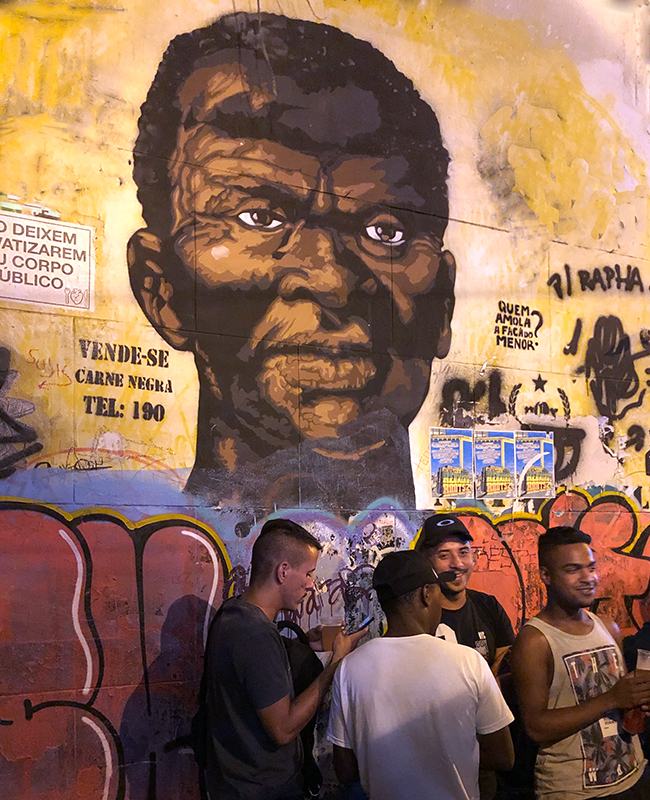
This dramatic mural is located on a building wall facing the Salt Rock, the main point of arrival for slaves arriving in Rio. One night each week a large crowd gathers at the Salt Rock for a jam session of Afro-Brazilian music. The audience is multi-racial. The stenciled message on the wall says, "Black meat for sale, call 190," another reference to this as the scene of a slave market. This work suggests both pride and social protest. (Additional images focusing on social protest are found later on this page.
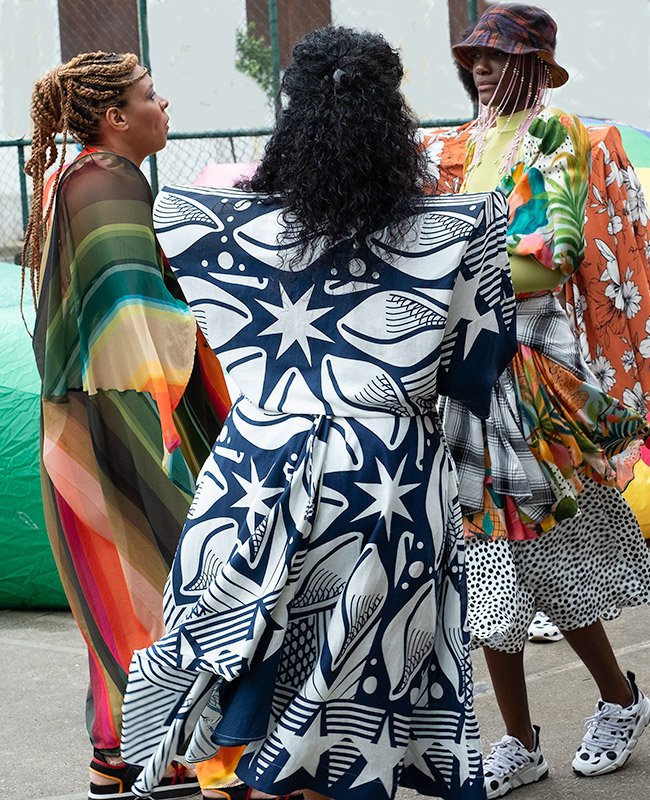
The people photographed here are actually professional models filming an advertising commercial for clothing by a prominent Afro-Brazilian designer. The likely purchasers of these fashions will be upper income Brazilians, likely of European descent.
The photo above and the painting below illustrate two faces of the Afro-Brazilian experience. One is a face turned outwards to the broader community (the photo above), especially to people of predominately European descent, and the other (the painting below) turned inwardly into the Afro-Brazilian community. The two serve as a metaphor for the place of the Afro-Brazilian in Brazilian society.
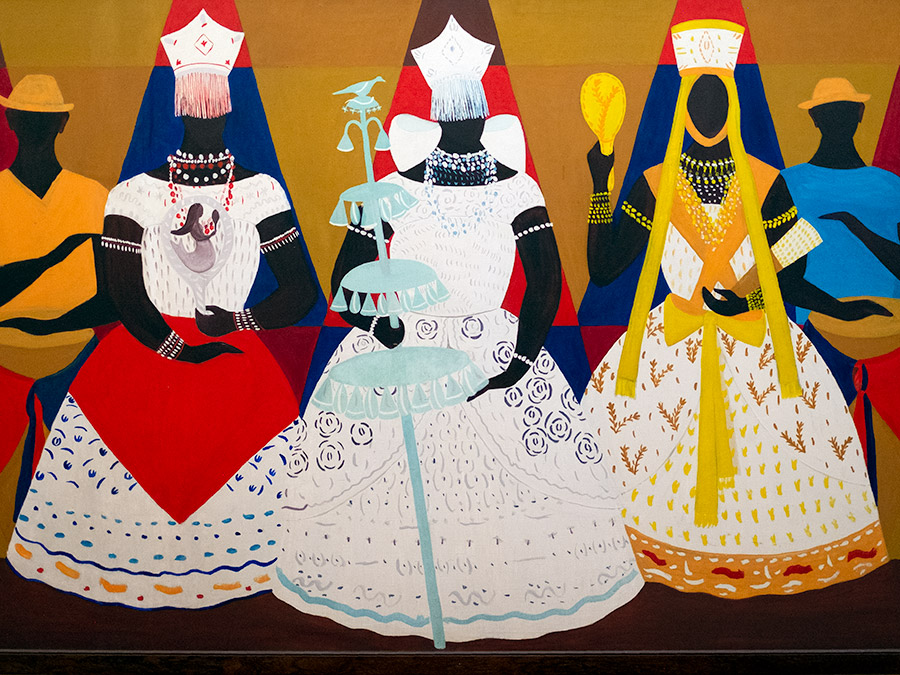
This painting that I found on exhibit in one of Rio's art museums and shows practitioners of an African based syncretic religion that developed in Brazil. Note the prominence of women in the ceremony.
The following photos are of street art found in Rio. Most are large mural sized works. All of them present Afro-Brazilian themes. Street art is prevalent throughout the city, some of it authorized and some of it "unauthorized". Afro-Brazilian themes are common in Rio's street art, representing a form of cultural expression that is not controlled or regulated or limited by the economic status of its creator.

Public art on walls, both authorized and unauthorized, is common throughout the city. This mural evokes the power of African heritage.

This scene from a large mural near a spot known as the Salt Rock in Rio and captures the movement of Afro dance. The Salt Rock is the main location where slaves imported into Rio were first unloaded from the boats. It also served as a slave market. The Salt Rock has become an important heritage center for Afro Brazilian culture.

This is one of a series of dramatic public murals recognizing different ethnic groups contributing to the makeup of modern Brazil.

This image was printed on paper and pasted on walls. Its actual size is quite large. Although dramatic, it was not accompanied by any message.
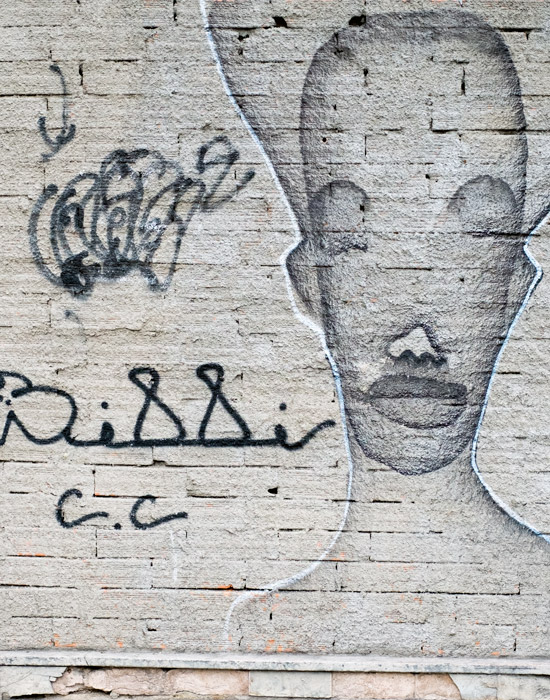
This is another example of an Afro image painted on a wall, but without any clear message accompanying the image.
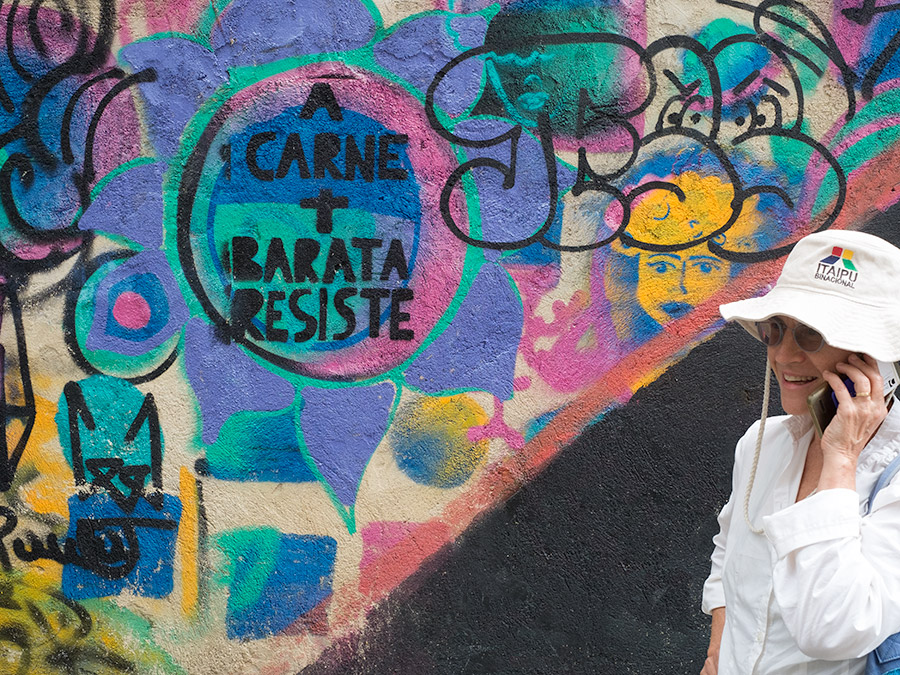
"The cheapest meat endures" is the message on this design. This is also on a wall near the Salt Rock . It is a reference to the selling of human beings in the slave market and the capacity of the African slaves to survive and resist.
(The lady on the telephone is the very talented former head of OU's program in Rio. The Rio program attracted many Afro-American students and first-generation university students, but it was closed in favor of continuing other campuses abroad. )
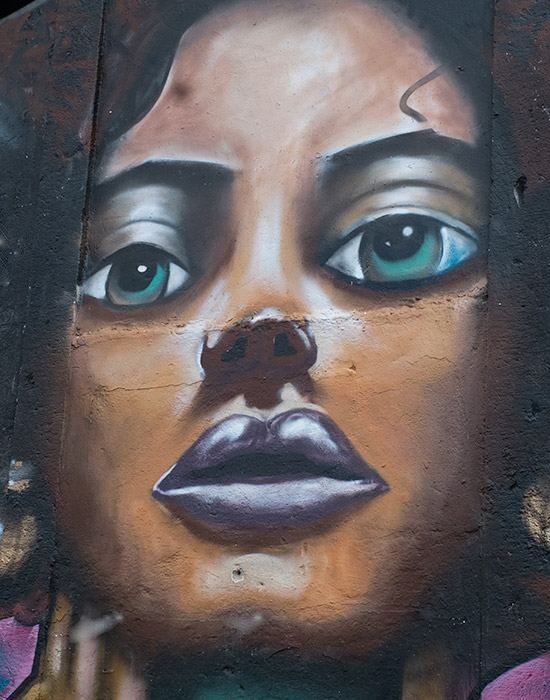
This is another mural image of a lady, but without any apparent social or political message.
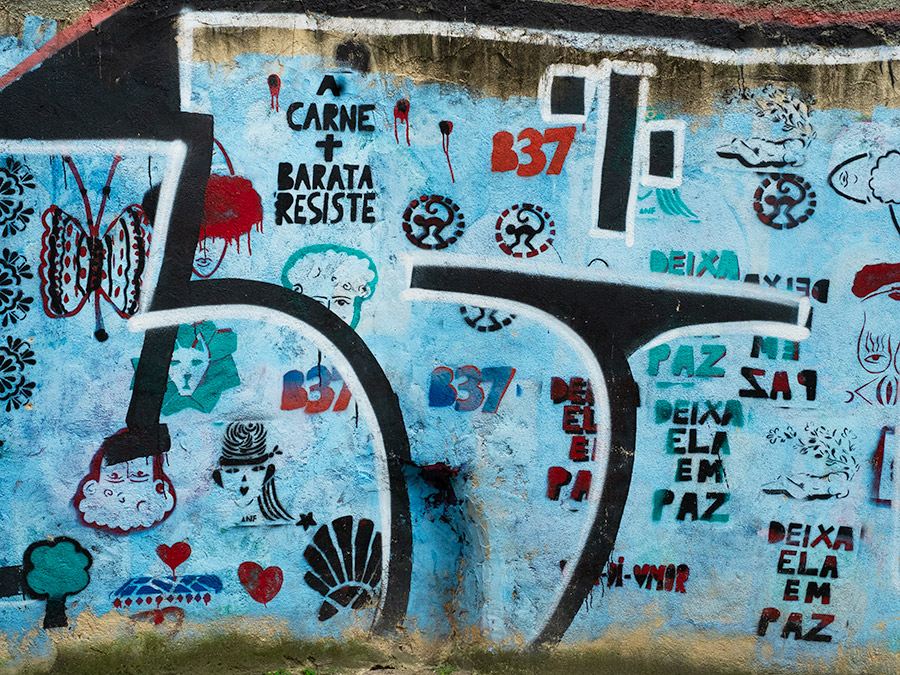
"The cheapest meat endures" stencil that we see in an earlier photo has been applied on this mural too. A number of different symbols appear here. "Deixa ela em paz" is saying, "leave her in peace", but we don't have any clues to understand the meaning of this in the context of the mural.
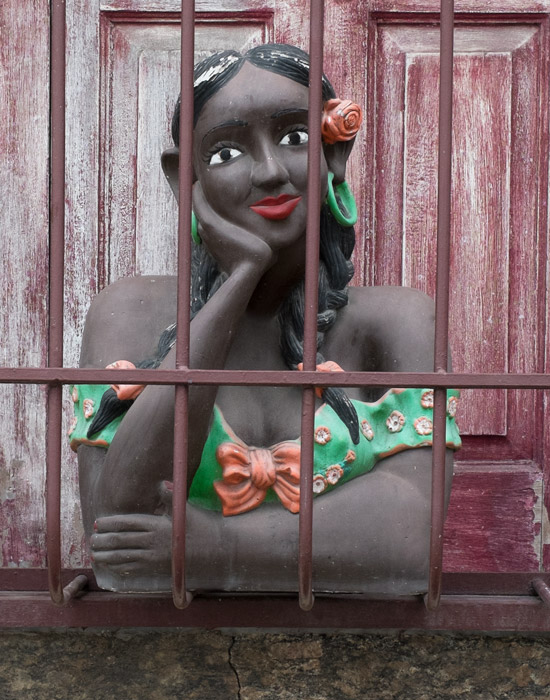
Lightheartedly, this life-size ceramic figure was placed in a house window in one of the old parts of the city where houses abut the sidewalk.
SOCIAL COMMENTARY
A large part of the Afro-art that is visible in Rio carries a social/political message. Afro-descendants tend to be one of the poorest segments of Brazilian society economically, and one of the most politically powerless. The great Brazilian sociologist, Gilberto Freyre, identified one of the great strengths he saw in Brazilian culture to be the miscigenação (miscegenation) of the races ...but many Brazilian leaders, on the other hand, have historically longed for a "Europeanization" of the society.
Discrimination against Afro-Brazilians has been always present in Brazilian history, and the Afro-Pride movement of recent years has been also focused on making a claim for great social justice.
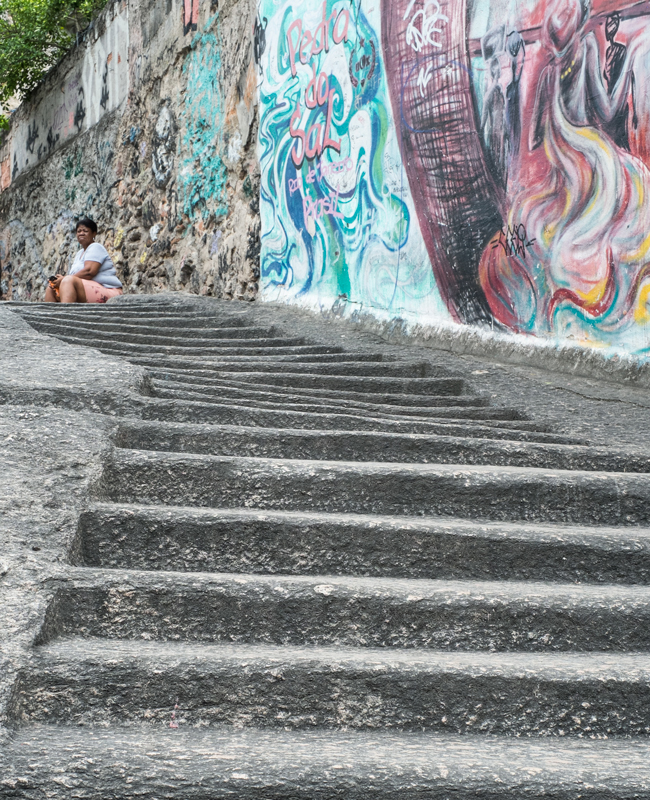
There are steps leading up from the Salt Rock. Afro themed murals can be seen on the wall at the right.
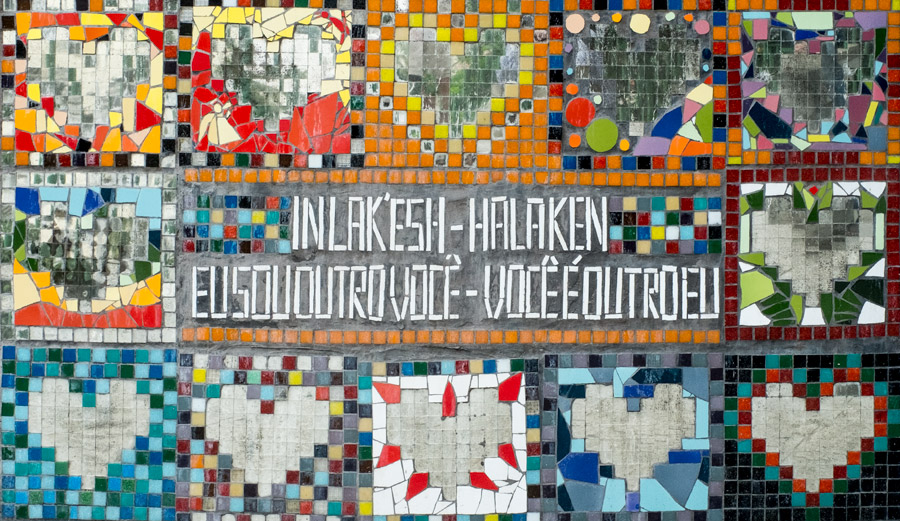
This is a mosaic that has seen better years, but it's message is still relevant. The top line is written in an unidentified language (African?), but the second line is in Portuguese and reads: "I am the other you; you are the other me."
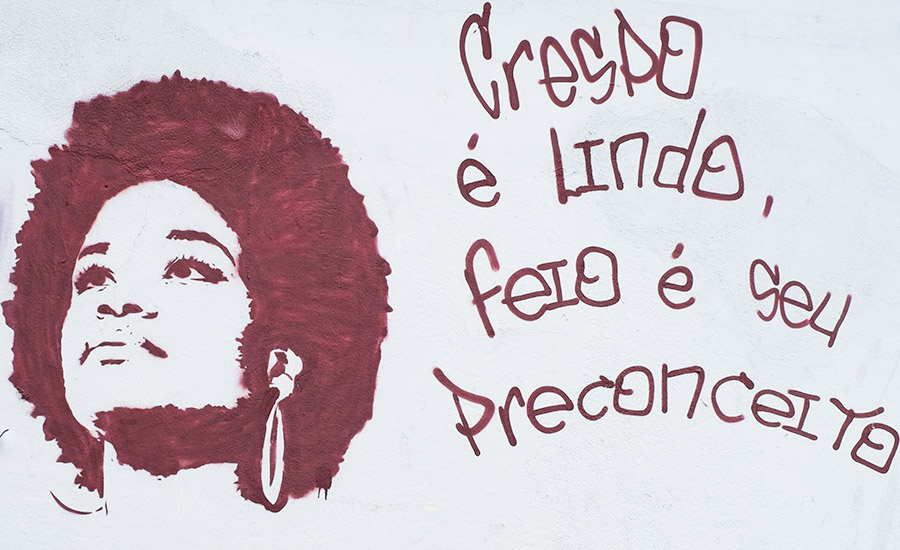
"Kinky is pretty, what is ugly is your prejudice" (This large mural was found in the city center.)
Stray bullets are one of the leading causes of death among adolescents in Brazil. Violence is an endemic problem, especially in the cities. Afro-Brazilians are affected by this violence out of proportion to their numbers. The following two murals appear to be dedicated to young men who were killed.

This appears to be a memorial to a young man killed in urban violence.
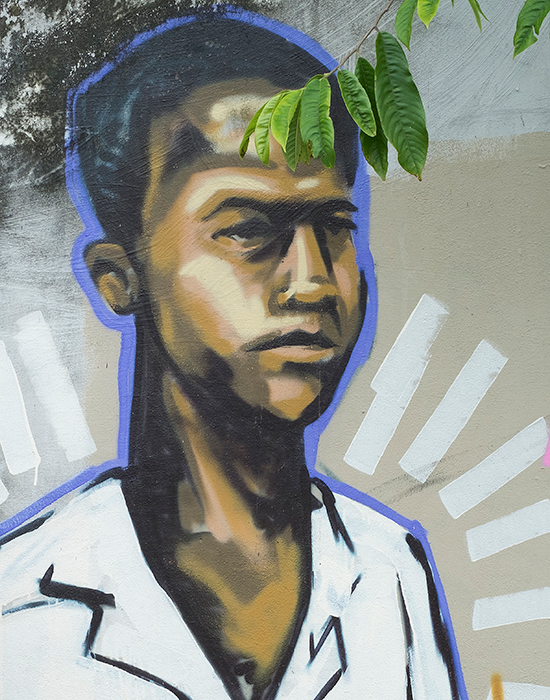
This is another example of a memorial mural.
political protest
Throughout the city many of the examples of street art to be found carrying a strong protest message. It is rarely overtly political in the sense of supporting a particular party or candidate, but it is directed to fundamental issues of public policy.
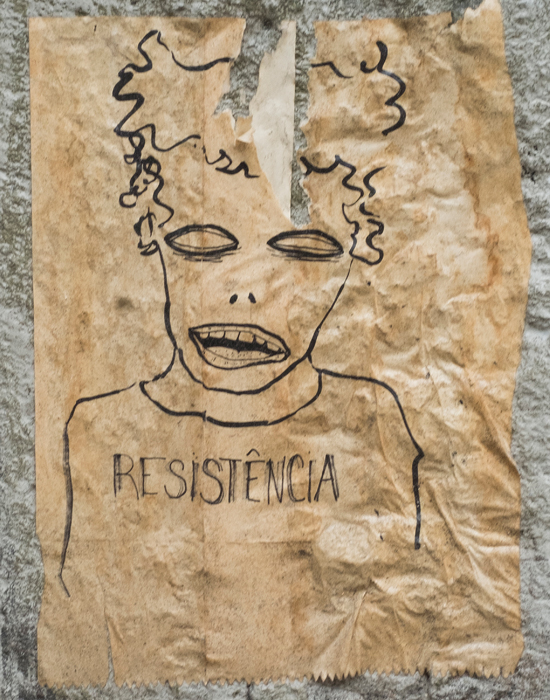
"Resistance"
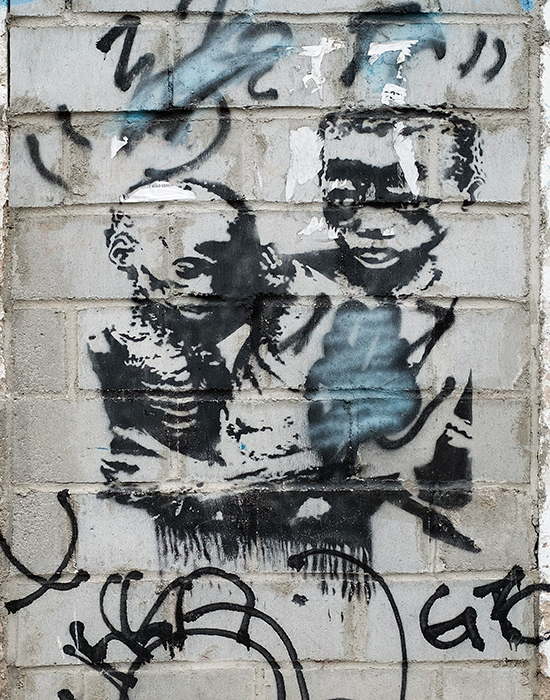
Another example of social protest art.
OFF THE STREET
Although the photos of this page are primarily intended to represent what can be found in public art on the streets, examples of Afro-Brazilian culture are widely found in museums, commercial establishments, and other settings in the city. Three examples of provided below.

This is a contemporary painting found in one of Rio's museums that makes reference to slave heritage. It repeats the theme of the selling of Black meat found in other examples on this page. The term "boneless" in English is a commentary, but the significance is not clear to me.

This is another painting from a museum collection, but from an earlier era.
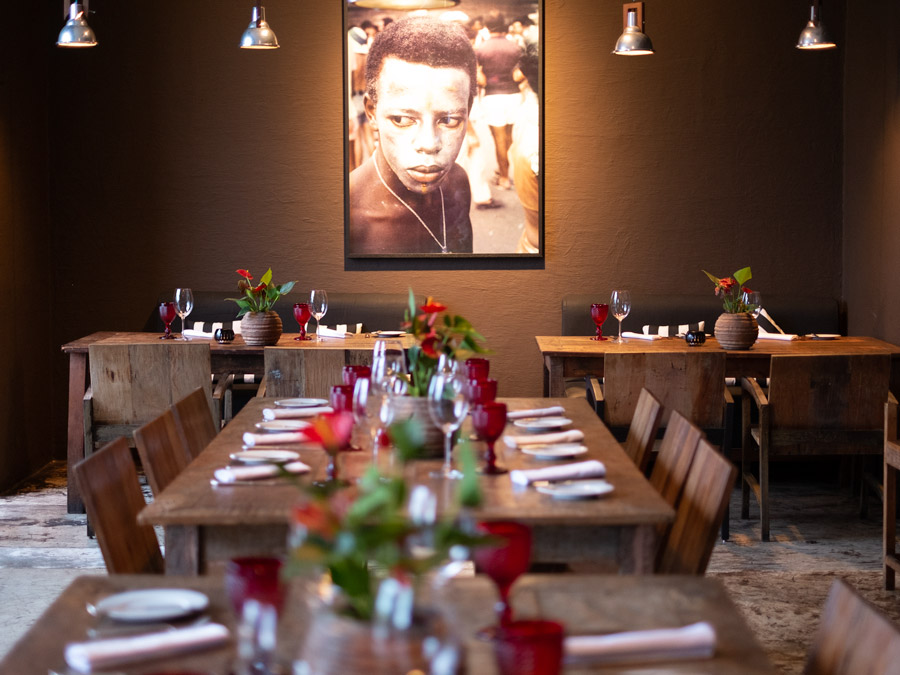
This is a scene from a dining room in an exclusive hotel in the Santa Teresa neighborhood of Rio. The selection of decorative art for the room is representative of the pervasive use of Afro themes in Rio.
all photographs by

Rodger Randle


























